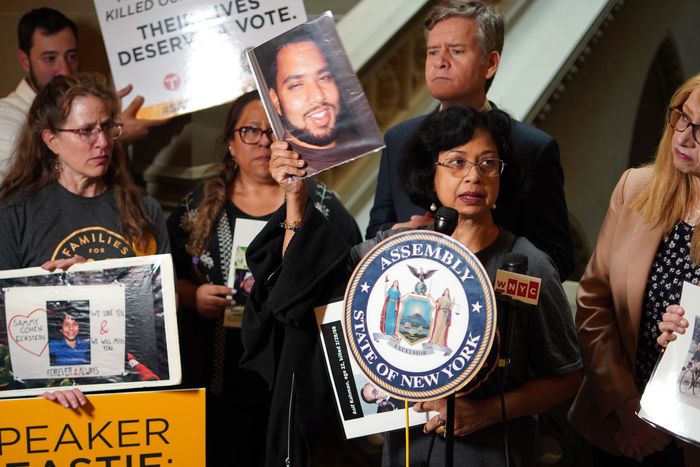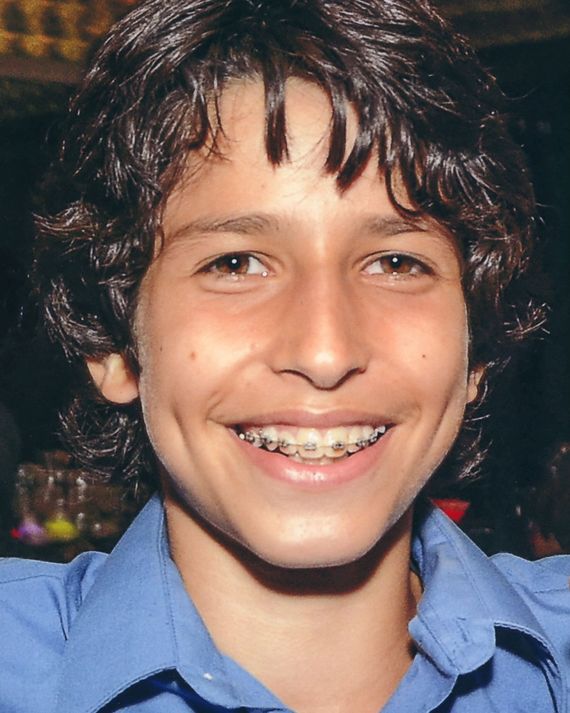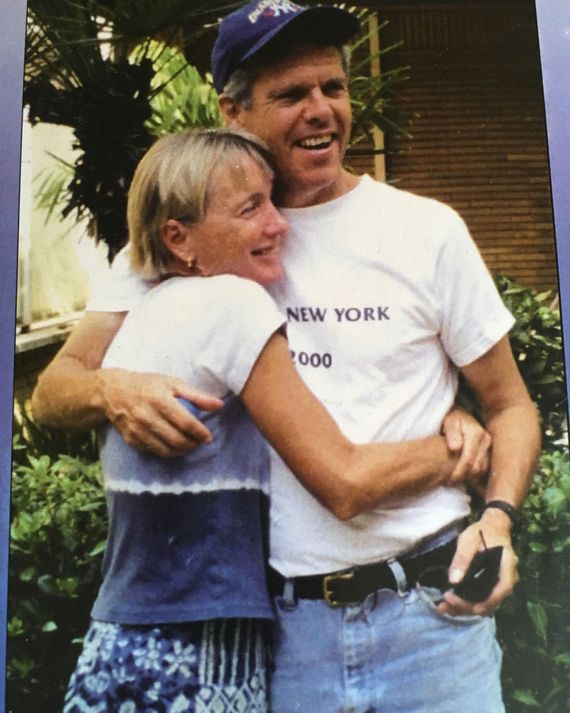
For the past three years, a close-knit group of mothers whose children were killed by reckless drivers in New York have made an annual pilgrimage to Albany to advocate for a lower speed limit in the U.S.’s largest city. The legislation, known as Sammy’s Law, is named in honor of 12-year-old Sammy Cohen Eckstein, who was killed by a driver just steps away from his Brooklyn home in 2013. One year after Sammy was killed, his mother (Amy Cohen) and other advocates successfully pressured the state to lower the city’s speed limit from 30 to 25 mph. But that wasn’t enough, Cohen said. Sammy’s Law would allow the city to set its own speed limits and, thereby, lower the current standard to 20 mph (a rate at which cities that have implemented it have seen a 40 percent drop in crashes). It was first introduced in 2020 by State Senator Brad Hoylman-Sigal, who represents the Upper West Side, and every year since. But each time, it has hit various roadblocks at both the city and state levels.
Up until last week, it seemed like this would be the year Sammy’s Law was finally passed — more kids were killed by cars in 2022 than in any year since Vision Zero began nearly a decade ago. The proposed change has already won majority support from the City Council in a “Home Rule” vote, and it has been kicked up to the State Legislature, where suburban and rural lawmakers tend to be more hostile to regulating drivers. Now, Albany insiders say that Assembly Speaker Carl Heastie, who represents the Bronx (where 48 people were killed in traffic violence last year), may not bring the bill to the floor for a vote before the session officially ends on June 9.
With days left before the State Legislature breaks for summer recess, Cohen and her fellow moms, who belong to a group organizing for pedestrian safety measures called Families for Safe Streets, have again arrived at the capitol building, where they began a hunger strike on Tuesday in order to make one last push against what Cohen calls an “invisible crisis.” These are their stories.
“I didn’t even know that people were really dying on our roadways in preventable crashes.”
Amy Cohen, 58, lost her son Sammy Cohen Eckstein, who was 12, when he was killed by a driver on October 8, 2013. Sammy was playing with a soccer ball when it rolled into the street on Prospect Park West near Third Street. The cars in one lane of the one-way roadway stopped to let him get the ball, but the driver of a van in the other lane sped up to go through the light, hitting Eckstein. The driver lost his license for six months but was never criminally charged.
Amy Cohen: On Sunday right before he died, we were gonna go spend the day with friends who had moved back to NYC from California. Sammy was adamant that he wanted to stay home and study for the Specialized High Schools Admissions Test. I said, “No, you cannot study. You must come with us.” He was so mad at me. The next morning, he was still not talking to me — he was very stubborn. (I do often say I’m trying to emulate his stubbornness in this fight.) He held on to that anger for, like, 24 hours, and on Tuesday morning, finally, he woke up and I begged forgiveness. He gave me a big hug and kiss, and we made up. He said, “I love you, Mom.” That was the day he was hit.
After the driver hit him, I raced to the hospital, and he was already in surgery. The doctor kept coming out and saying his heart had stopped. I never got to see him alive again. They just came out and said he didn’t make it.
The day after Sammy died, my husband mentioned our family vacation to England. We had done a home exchange in London, so we were staying in a very residential neighborhood, and they had just brought Vision Zero there, and there were signs everywhere: “20 is Plenty.” And my husband said to me, “If only New York City had been like London and lowered the speed limit, then Sammy would still be alive.” So right away, I started speaking out, and there was a hearing at the City Council on whether New York City should lower its speed limits. I still remember it was on Halloween.
I have to say, the City Council was so unaware. It didn’t have the authority to do it. Truthfully, I had no idea this was really even much of an issue. I didn’t even know that people were really dying on our roadways in preventable crashes. You would read about it in the paper, and it always made it seem like it was the person’s fault.
But right now, we are stuck with Speaker Heastie not committed to bringing the bill for a vote. That is all we are asking: Bring the bill for a vote.
“I knew he passed, because he didn’t come home. I was searching for him for eight days.”
Patricia Morant-Fuller, 59, lost her son, Aundrei Fuller, who was 29, on August 14, 2021. He was riding an electric scooter to the LIRR station after work, when the driver of a Hyundai turned the corner, knocked him off his bike, and killed him at the corner of Fulton and Hoyt Streets in Brooklyn. The driver was never charged.
Patricia Morant-Fuller: I had to bury my son alone. Aundrei was my only child. Two years before that, I had an accident where a car hit me, so he came to stay with me and help me during the pandemic, when I had surgery for my shoulder. That’s how my son was living with me. That’s how I knew he passed, because he didn’t come home. I was searching for him for eight days. I searched all the hospitals, all the prisons, whatever, the police stations. I called to ask if there was a body found. I asked if they could look at their accidents or any unknown John Does. Then they told me there was a very bad accident, and he had my son’s birthday.
What speed are you going that you couldn’t stop when you’re turning? I have no information other than what I saw on the police report, but you have to be speeding to be going around a corner and run over someone. I never got an apology, the case was closed, nothing, so I had to live with the thought of burying my son, alone, trying to pay for a headstone, which I couldn’t afford, because I was a single mother.
I joined Families for Safe Streets, because the district Attorney told me about different programs that can help me heal. In December 2021, just about three to four months after my son passed, I got in touch with them.
So I met Amy and the rest of the crew. They’ve been very supportive. I learned everyone had lost people and realized it still hurts. Whether it’s ten years ago, a month ago — it hurts just the same. I wholeheartedly support any bill that will save another person from going through what we went through.
There need to be safer streets for pedestrians — for the mother with her stroller, the disabled person using a wheelchair who can never cross the four lanes of street fast enough because somebody is speeding. It just goes on and on. You have to slow down.
“Every day, you wake up, you turn on the TV, and you hear of another one.”
Juliane Williams, 54, lost her daughter Doniqueca (Niiqua) Cooke, who was 21, on June 30, 2016. A York College student pursuing an occupational therapy degree, Cooke was standing on the sidewalk when she was hit by the driver of a Porsche flying down the Horace Harding Expressway service road near Junction Boulevard in Queens. The driver fled on foot and was later charged with leaving the scene of a fatal crash and running a red light.
Juliane Williams: The pain is every day. My daughter was standing on the sidewalk — a block, or less than a block, from her home.
She was a beautiful soul. She was a very good girl in her academics. She was a hairdresser for her friends. She did makeup, was very fashionable. She was trying to cross the street to get to a makeup store when she was hit.
I was with my daughter in York College — we were mother-and-daughter students. We were known in the college. I was a nursing student. Had that driver been driving slower, I would have completed my education. I was out for years. I was just lying down. I slept all day. Oh my God, it was more than depression. There’s so much loss to lose a family member. There’s nothing that can replace them.
This year will be seven years since I am on this earth without my daughter. Sammy’s Law is critical, because we are trying to prevent the situation that we are facing every day. We are suffering. It’s a nightmare for us, and every day, you wake up, you turn on the TV, and you hear of another one.
I got involved two to three years ago in this work. I also started my daughter’s organization, the NiiquaBee Faith Foundation. My daughter’s foundation is, like, I had to find a way to live again.
“Firefighters were a block away, and the hospital was one and a half blocks away, but they couldn’t revive him.”
Lizi Rahman, 64, lost her son Asif Rahman, who was 22, on February 28, 2008. He was biking home to Jamaica from his job as a teacher’s aide when he was hit by a freight-truck driver on Queens Boulevard. His mother fought successfully for the installation of a bike lane on Queens Boulevard, formerly known as the “Boulevard of Death.” The driver was never criminally charged.
Lizi Rahman: The driver didn’t really stop. He kept going, and he crushed Asif. He died instantly. Firefighters were a block away, and the hospital was one and a half blocks away, but they couldn’t revive him. He died on the spot. Obviously, the driver was speeding, because if he wasn’t, he would have stopped or he wouldn’t have hit him.
My son Asif — he was a vibrant young man and very talented. He used to write poems, he used to do rap, and he recorded a lot of music. His CD was supposed to be released a few days after his death. A few years after he died, I used to go to his crash site and play his music out loud. It felt like he was gone, but he wasn’t really gone. He was there. His voice was there. His music was there.
After his burial, I went to the crash site, and I noticed there was no bike lane on Queens Boulevard. I remembered I was very much worried for my son to ride his bike all over the city. He always assured me, “Mom, don’t worry. There are bike lanes everywhere.” So when I went to see the Queens Boulevard crash site, I was shocked to see that there were no bike lanes. I said I have to get bike lanes on Queens Boulevard, because while it wouldn’t bring my son back, maybe a lot of other lives would be saved. The whole of Queens Boulevard will have bike lanes now.
I’m a founding member of the group Families for Safe Streets. Later on, we were able to reduce the speed limit on Queens Boulevard. After reducing the speed limit on many streets, crash reports have decreased. I believe that if Sammy’s Law is in effect, the chances of saving lives are even greater.
“When people like me learn that the city doesn’t control its own speed limits, they are appalled.”
Mary Beth Kelly, 73, became a widow and single mother of two when her husband, Carl Henry Nacht, who was 56, was killed by the driver of an NYPD tow truck on June 22, 2006. The couple was biking up the Hudson River Greenway that evening, when the truck made a quick right turn into the tow pound on 38th Street, knocking Nacht, a physician, off his bike and into a parked truck, then onto the ground.
Mary Beth Kelly: It’s 17 years ago this month. It was a beautiful summer day, and we had had a lot of rain, when he called me at my office and said, “Hey, when you get home, do you wanna take a ride and eat dinner outside?” We got on our bikes together, and we headed out on what was at that moment a pretty new, undiscovered greenway.
As we pulled into an intersection at 38th Street, I saw headlights bearing down on me and realized there was a tow truck coming and pulling rapidly into the turnoff. I slammed on my brakes, and the truck passed right in front of my wheel. My husband was to the left, and he wasn’t so lucky. He was hit and thrown into a parked tow truck. A cyclist came up, stopped, and called 911. We waited, as the traffic on the West Side Highway was thick, and I could hear the siren wailing far in the distance, and it took forever to get to us.
I’m glad I was there to hold him and make sure that help was coming. I will never lose the memory and images of almost every second of that night, but I’m still glad he wasn’t alone and that, if that was going to be his last night alive, I was with him.
He was very beloved. He did house calls by bike to his elderly patients, for whom it was often very hard to get to the office, but also in the ’80s to AIDS patients who felt very ashamed about their outward appearance. He would go to their homes to administer to them and often be with them in their hour of death. He would ride his bike, because it was the fastest way to get to and from his office to these patients.
After he was killed, it was a real learning curve for me to get to know what NYC had control over and what Albany did. Actually, when people like me learn that the city doesn’t control its own speed limits, they are appalled. We are this huge metropolis of 8 million people, and if Syracuse or Rochester doesn’t want what we need here, they have as much power as our own lawmakers. It’s this horrible game of back and forth. We’re sitting on pins and needles, knowing that this is the third year of trying to get this done.
We are powerful in our numbers and our stories, but we don’t want to be fighting the fight anymore.
These conversations have been condensed and edited for clarity.









